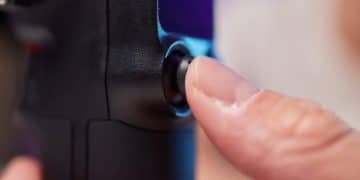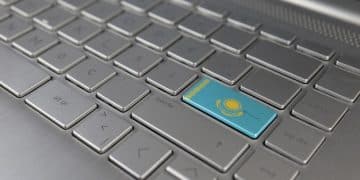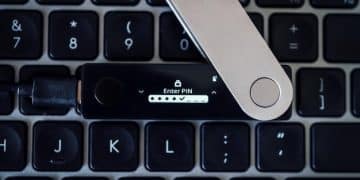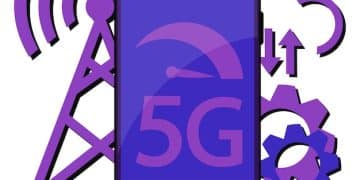Troubleshoot Common Printer Problems: A Step-by-Step Guide

Troubleshooting common printer problems for home users involves checking connections, clearing paper jams, updating drivers, and ensuring proper network settings, which can often resolve issues and restore printing functionality.
Is your printer refusing to cooperate? Don’t throw it out the window just yet! This guide will walk you through how to troubleshoot common printer problems: a step-by-step guide for home users, restoring your printing peace and saving you a potential headache.
Understanding Common Printer Problems
Printers are a ubiquitous part of modern life, essential for everything from printing boarding passes to completing important work documents. However, these devices are not without their flaws. Understanding the common issues that plague printers can help you quickly identify and resolve problems.
This section will cover some of the most frequently encountered printer problems. By recognizing these issues, you’ll be better prepared to address them effectively, saving you time and frustration.
Connectivity Issues
One of the most common causes for printer malfunction is connectivity issues. This can range from problems with USB connections to Wi-Fi connectivity difficulties. Ensuring your printer is properly connected to your computer or network is the first step in troubleshooting.
Paper Jams
Paper jams are a perennial problem for printer users. They can be caused by various factors, including using the wrong type of paper, misaligned paper trays, or worn-out rollers. Clearing a paper jam correctly is crucial to prevent damage to your printer.
Driver Problems
Outdated or corrupted printer drivers are a frequent source of printing issues. Drivers are software programs that allow your computer to communicate with your printer. When these become obsolete or damaged, printing errors are inevitable.
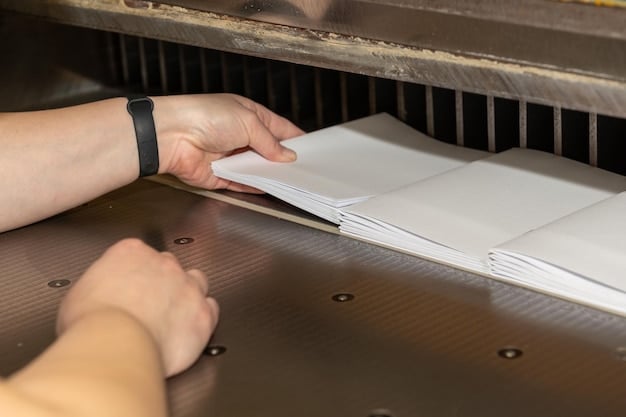
Step-by-Step Troubleshooting Guide
Now that you’re familiar with some of the common problems, let’s delve into a step-by-step guide to troubleshoot these issues. Following these steps methodically can help you pinpoint the source of the problem and implement the right solution.
This section will provide practical advice and actionable steps to address the most common printer problems. Each step is designed to be easy to follow, even for those with limited technical expertise.
Check the Basics
Before diving into more complex solutions, start with the basics. Ensure your printer is turned on, plugged into a power source, and that all cables are securely connected. Also, check the printer’s display panel for any error messages.
Restart Your Devices
A simple restart can often resolve temporary glitches. Turn off your printer and your computer. Wait a few minutes, then turn them back on. This can clear any temporary software conflicts.
- Ensure your printer is powered on.
- Check all cable connections.
- Look for error messages on the display panel.
- Restart both your printer and computer.
Dealing with Paper Jams
Paper jams can be annoying, but they’re usually straightforward to fix. The key is to clear the jam carefully to avoid damaging the printer’s internal components.
In this section, we’ll guide you through the process of safely removing jammed paper and preventing future occurrences.
Open the Printer Covers
Refer to your printer’s manual to locate the access panels for removing paper jams. Open these panels carefully to expose the jammed paper.
Remove the Jammed Paper
Gently pull the paper out, making sure not to tear it. If the paper is stuck, try pulling it from a different angle or opening additional access panels.
Prevent Future Jams
To prevent future paper jams, use the correct type of paper for your printer, ensure the paper tray is properly aligned, and clean the printer’s rollers regularly.
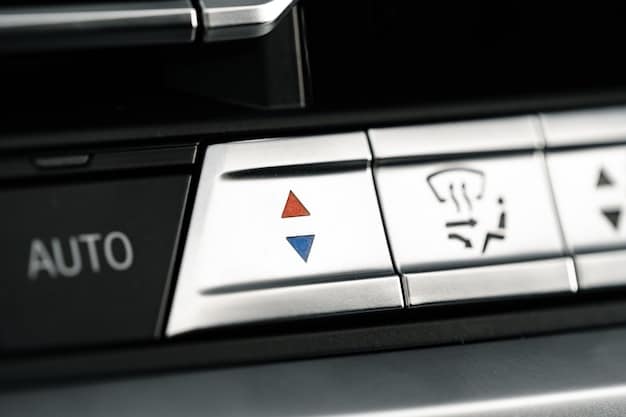
Updating Printer Drivers
Keeping your printer drivers up to date is essential for optimal performance. Outdated drivers can cause a range of issues, including printing errors and compatibility problems.
This section will guide you through the process of updating your printer drivers, ensuring smooth and reliable printing.
Check for Driver Updates
You can check for driver updates through your computer’s operating system or by visiting the printer manufacturer’s website.
Download and Install Updates
Download the latest driver for your printer model and follow the installation instructions. Make sure to restart your computer after installing the new driver.
Reinstall Drivers
Sometimes, reinstalling the drivers can resolve issues. Uninstall the current drivers and download the latest version from the manufacturer’s website. Follow the instructions to install.
- Check for updates using Device Manager.
- Visit the manufacturer’s website for the latest drivers.
- Download and install the updated drivers.
- Reinstall if necessary.
Troubleshooting Wireless Printing
Wireless printing offers convenience, but it can also present unique challenges. Issues with network connectivity, IP addresses, and router settings can all interfere with wireless printing.
This section will provide tips on troubleshooting wireless printing issues, ensuring your printer stays connected and performs reliably.
Check Network Connection
Make sure your printer is connected to the same Wi-Fi network as your computer. Verify the Wi-Fi password and check the router’s settings.
Verify IP Address
Ensure your printer has a valid IP address. You can usually find this information in the printer’s settings menu. If the IP address is incorrect, you may need to reconfigure the network settings.
Restart Router and Printer
Restarting your router and printer can often resolve connectivity issues. This can refresh the network connection and clear any temporary glitches.
When to Seek Professional Help
While many printer problems can be resolved with basic troubleshooting, some issues require professional assistance. Recognizing when to seek expert help can prevent further damage to your printer and save you time and frustration.
This section will outline the types of problems that typically require professional repair, helping you make an informed decision about when to call in the experts.
Hardware Failures
If you suspect a hardware failure, such as a malfunctioning print head or a damaged roller, it’s best to consult a professional. Attempting to repair these components yourself can cause further damage.
Complex Error Codes
Some error codes indicate serious internal problems that require specialized knowledge and tools to resolve. If you encounter a complex error code that you can’t decipher, seek professional help.
Recurring Problems
If you find yourself constantly troubleshooting the same issue, it may be a sign of a deeper problem that requires professional repair. Recurring problems can indicate underlying hardware or software issues that need expert attention.
- Hardware failures.
- Complex error codes.
- Recurring issues.
- Physical damage.
Preventive Maintenance Tips
Preventing printer problems is often easier than fixing them. Regular maintenance can extend the life of your printer and ensure it operates smoothly.
This section will provide practical tips on preventive maintenance, helping you keep your printer in top condition and avoid common printing issues. Simple routines can save a lot of headaches.
Clean the Printer Regularly
Dust and debris can accumulate inside your printer, causing jams and other problems. Clean the printer regularly with a soft, dry cloth to remove any buildup.
Use Quality Paper
Using high-quality paper can prevent jams and ensure crisp, clear prints. Avoid using paper that is too thick, too thin, or damaged.
Update Firmware
Keep your printer’s firmware up to date to ensure it has the latest features and bug fixes. Check the manufacturer’s website for firmware updates and follow the installation instructions.
| Key Point | Brief Description |
|---|---|
| 🔌 Check Connections | Ensure all cables are securely connected and the printer is powered on. |
| 📄 Clear Paper Jams | Carefully remove any jammed paper to prevent damage to the printer. |
| 🔄 Update Drivers | Keep your printer drivers up to date for optimal performance. |
| 📶 Network Settings | Verify Wi-Fi details and IP address. Restart if needed and check configuration information. |
Frequently Asked Questions
▼
Check the power connection, USB/network connection, and ensure the printer is set as the default printer. Also, verify that there are no error messages on the printer’s display.
▼
Turn off the printer and open the access panels. Gently remove any visible paper, pulling slowly to avoid tearing. Ensure all fragments are removed.
▼
Visit the printer manufacturer’s website and download the latest drivers for your printer model. Follow the instructions for installation, and restart your computer afterward.
▼
Check ink or toner levels, ensure the cartridges are properly installed, and clean the print heads. Also, verify that the correct print settings are selected.
▼
Ensure the printer and computer are on the same Wi-Fi network. Check the printer’s IP address. Restart the router, printer, and computer. Reinstall printer drivers.
Conclusion
By following this comprehensive guide, you can effectively troubleshoot common printer problems: a step-by-step guide for home users. Remember to start with the basics, proceed methodically, and don’t hesitate to seek professional help when needed. With a little patience, you can keep your printer running smoothly for years to come.
